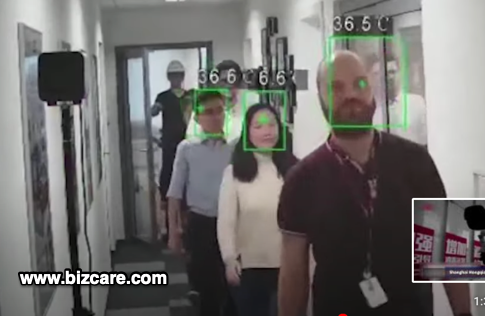The notion that U.S. employers would engage in broad-scale temperature screening of employees would have once been essentially unthinkable. But the realities of COVID-19 are changing the workplace, as least for the time being. With the encouragement of the Centers for Disease Control and Prevention (“CDC”) and some state and local governments, and in light of the blessing of the Equal Employment Opportunity Commission (“EEOC”), more employers are now considering the implementation of daily temperature screening[1]before employees enter the workplace.
US COVID-19: Employee Temperature Screening: What Employers Need To Consider When Deciding Whether To Implement a Screening Process
In light of concerns about the spread of the novel coronavirus in the workplace, employers are confronting important questions pertaining to the screening of employees for COVID-19 symptoms, including as it pertains to taking employees’ temperatures: May (or must) we screen employees for fevers, and if so, how should we implement such a practice?
(more…)
A.I. Powered Crowd Thermal Monitoring Solution Launched by BizCare® Helps Hospitals Education and Businesses

News provided by BizCare
Lafayette, CA., April 7, 2020 -- BizCare recently released its new Crowd Thermal Monitoring Solution which helps organizations enforce their own safety and health procedures.
Although temperature screening cannot exclusively determine employee or patron wellness, BizCare's Crowd Thermal Monitoring Solution leverages artificial intelligence, non-invasive thermal imaging, together with advanced cyber-security to objectively inform affected personnel with elevated body temperatures - a primary symptom of the COVID-19 virus.
How Indoor Air Quality directly improves productivity
Recent studies suggest that indoor air quality and productivity of employees are related factors and that healthy air quality directly contributes to the performance of staff. Understanding the relationship between the two topics will help employers improve both air quality and the health and performance of their employees.
Do you know which chemicals are in your air
At BizCare, we help you track the key factors that affect air quality: chemicals, dust, CO2, humidity, and temperature. The first on the list sounds a bit ambiguous--which “chemicals” are we even talking about? The chemicals in your air that we’re most interested in are commonly referred to as VOCs, and we have quite a bit to say about them.
Five air quality factors affecting your business
It’s easy to assume the air in your office is safe and comfortable if your fire alarm and carbon monoxide monitor aren’t ringing. Unfortunately, if you want your office to be healthy for you and your family, you should start paying attention to other factors that could be affecting your air quality.
Understanding PM2.5 and your health
As pollution and environmental policies continue to be the subject of international debate, you may hear the term “PM2.5” in the news. But what is PM2.5 and why should you care? Below, we’ve outlined the basics of this invisible pollutant and how it may be affecting your health.
What is Fine Dust and how to manage it
What is the Fine Dust
Did you know that fine dust is surprisingly very small? Fine dust particles can fit across the width of a strand of hair, which means it is invisible to the human eye. It is extremely dangerous as it can be breathed in, absorbed into the bloodstream and cause/ exacerbate major health issues like asthma and heart disease.
Should you recommend apps or wearable tech

As wearable technology and health-based mobile applications become more prevalent among patients, there is a growing demand for healthcare professionals to be able to recommend these to patients. Many people simply see this as an extension of medical advice, after all you are already recommending medications, treatments, and care options.
Patients want electronic communication

More and more people are clamouring for the ability to communicate with their doctor through email and social media. In fact, a recent study from the Journal of General Internal Medicine reports that 37 percent of patients have emailed their doctor while 18 percent used Facebook to get in touch with their physician.
- 1
- 2

